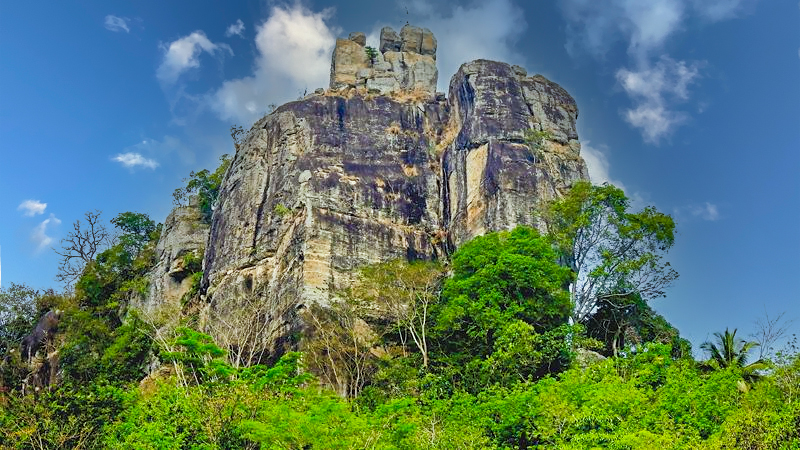
Uthuwankanda, often referred to as Saradiyel Rock, is a prominent geological and historical landmark located in Mawanella, Sri Lanka. This iconic rock formation is named after Deekirikevage Saradiyel, a legendary figure known as the “Robin Hood of Sri Lanka” for his exploits during the mid-19th century. Saradiyel’s story and the striking natural beauty of Uthuwankanda make it a significant attraction for both history enthusiasts and nature lovers.
Saradiyel was a notorious outlaw who became a folk hero for his acts of rebellion against British colonial rule and the local elite. Born in 1832 in the village of Uthuwankanda, he is remembered for his daring raids on wealthy merchants and colonial establishments, redistributing the spoils to the poor and oppressed. His deep knowledge of the rugged terrain around Uthuwankanda allowed him to evade capture for many years, and the rock itself served as his hideout and stronghold.
The rock formation of Uthuwankanda is notable for its imposing height and steep cliffs, offering panoramic views of the surrounding landscape. The challenging ascent to the top attracts hikers and adventure seekers. The climb, while demanding, is rewarded with breathtaking vistas of lush greenery and distant mountains, providing a unique perspective on Sri Lanka’s natural beauty.
In addition to its natural allure, Uthuwankanda is steeped in historical significance. At the summit, remnants of Saradiyel’s hideout, including caves and lookout points, can still be seen. These historical features provide a tangible connection to the legend of Saradiyel, allowing visitors to immerse themselves in the stories of his bravery and cunning. Local guides often share tales of Saradiyel’s exploits, enriching the experience with cultural and historical context.
The site also hosts an annual festival in honor of Saradiyel, drawing crowds who come to celebrate his legacy. The festival features reenactments of Saradiyel’s life, traditional music, and dance performances, highlighting the cultural impact of this folk hero on the local community.
